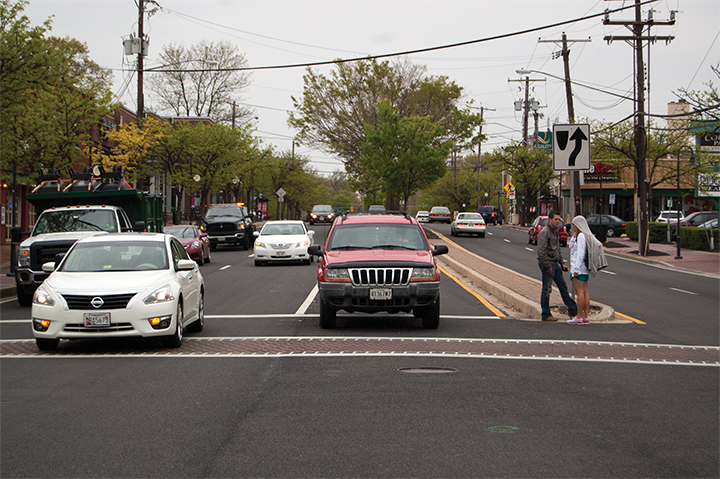
Knox Road and Route 1 are the major roads just off campus.
As College Park prepares to welcome back this university’s students, city officials are ensuring that promised pedestrian safety measures are in place or on their way to implementation.
The Maryland State Highway Administration officially reduced the speed limit on Route 1 from 30 to 25 mph, effective as of midnight Aug. 15. City officials said the new posted speed limit will be enforced 24/7 by speed cameras between Guilford Drive and Berwyn Road.
These changes came after the growing concern caused by three pedestrian deaths that occurred around the same area of Route 1 this year. City Manager Joe Nagro said the City Council had asked the SHA to take action in the past, but the recent accidents were the catalyst for these changes to take place.
“There was an effort on the part of City Council that encouraged [the SHA] to do it,” Nagro said. “The City Council has always been on record of asking for more improvements for pedestrian safety on Route 1 for many years.”
Nagro said he and other officials have been concerned that frequent speeding on Route 1 and other aggressive driving behaviors, combined with the high density of pedestrians that comes with proximity to a college campus, makes for a dangerous situation. University Police hope increased enforcement and officer presence will encourage drivers to slow down and watch for pedestrians more vigilantly.
“Our officers are heavily engaged in traffic enforcement any time of the year, but with the recent tragic events of the pedestrian fatalities, we’re focusing more in the Route 1 corridor … by stepping up enforcement for speed,” Maj. Marc Limansky said. “And that’s one thing, but we’re also … keeping up a visible presence there just keep people slow.”
The speed cameras will issue tickets to any vehicle going over 37 mph, but police can issue tickets to drivers going over the new 25 mph limit at their discretion, he said.
Aggressive driving behaviors are not the only factor in dangerous situations for pedestrians, Limansky said; pedestrians sometimes neglect to follow safe methods of crossing through traffic.
On a college campus, where pedestrian traffic is higher than vehicle traffic, students are used to crossing streets without much regard for safety, Limansky said, and the problem is complicated by students walking while intoxicated. Bob Ryan, city public services director, said a median fence will be built along the road to prevent pedestrians from crossing outside of the crosswalk.
“The culture is different on campus, in that drivers through campus are general aware that people are gonna step out in front of them,” Ryan said. “It’s more dangerous when you get off-campus.”
Signage indicating the changes is an important aspect of the new safety efforts, for both drivers and pedestrians, Ryan said. Ryan also said education measures are in the works to teach pedestrians about traffic safety, but ultimately, pedestrians need to act more responsibly.
“The State Highway Administration, the University Police, the city and the county police are making every effort they can to make sure people are safe and [the recent measures] have all been done to try to improve pedestrian safety,” Nagro said. “But those are not the only things that do it. The students themselves have to take some responsibility.”



